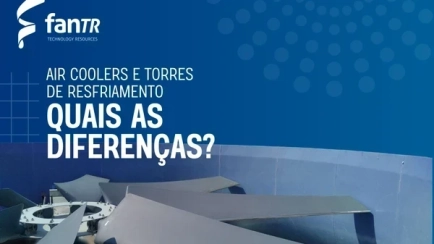
Cooling Tower and Air Cooler



Differences between the Cooling Tower and the Air Cooler
Many people who are inserted in this environment have doubts about which is the best option for their needs and how each one works. Although the final objective of both is the same, that is, to carry out the thermal exchange of a cooling liquid, the Cooling Tower uses a specific method to carry out the thermal exchange, and, an Air Cooler system uses a different approach.
In an industrial plant, such as a petrochemical or refinery, there is an enormous amount of equipment that generates heat, such as engines, centrifugal pumps, condensers, and chillers, among others. For this equipment to work efficiently, it is necessary to cool it down. We can make an analogy with the processor of a notebook or desktop, which also needs to be cooled to work properly. The Cooling Tower's main function is to dissipate heat, allowing equipment to operate at an ideal performance level. There are different types of cooling towers, each with its particularities and specifications, such as Counter Current and Cross Flow Towers; however, it is not our objective to carry out a comparative analysis of them.
The Cooling Tower captures water from an industrial plant, which usually comes with a high temperature (around 40°C), and cools this liquid (treated water) by reducing its temperature (≈°C). By cooling it, it returns to the system and refrigerates the equipment and engines, making the system much more efficient and performance increases significantly.
.png)
The Air Cooler has the same purpose of cooling a liquid coolant, but the process is completely different from the one used in the Cooling Tower. In the cooling tower, the saturated water directly undergoes an evaporation process so that heat exchange occurs and it is possible to remove heat from hot water, releasing it into the atmosphere in the form of steam. In the Air Cooler, the thermal exchange is indirect and the functioning is similar to that of a car radiator. A set of ventilators cools the finned bundle tubes so that the refrigerant fluid inside can be cooled.
The function of the Air Cooler is also to cool the refrigerant, but it differs in the way it is done. The fluid used in the Air Cooler is often not a liquid, but a gas. Most refineries and petrochemical plants that use Air Coolers, work with hydrocarbons, which are even used to produce final products and by-products, such as diesel and gasoline in refineries or solvents in petrochemical plants.
.png)
So it not only refrigerates the liquid or gas used to cool other equipment, but it can also cool the industrial plant's product. In a nutshell, these are the main differences between the two cooling systems.
Share your questions and ideas with us by contacting us below.